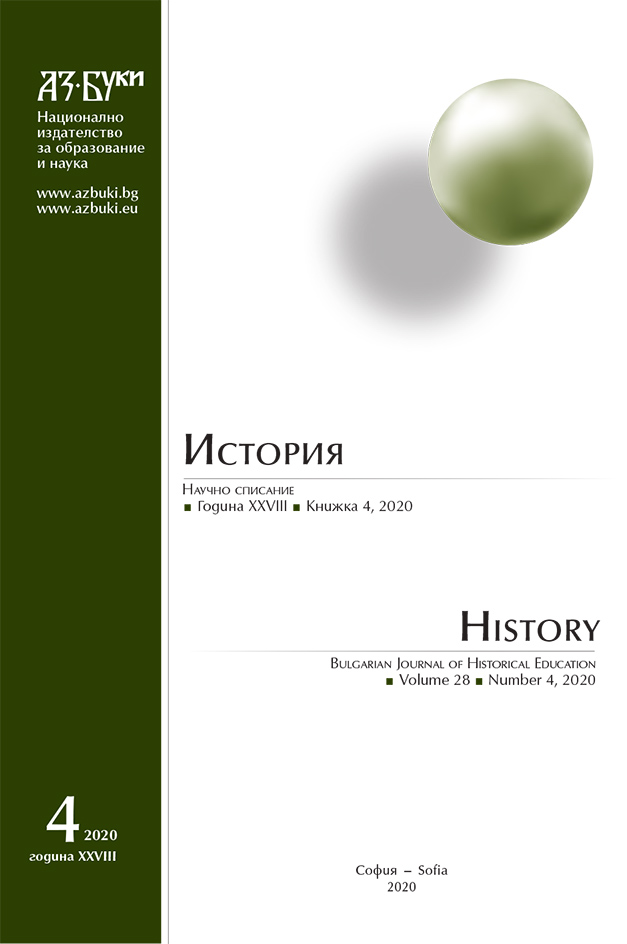
We kindly inform you that, as long as the subject affiliation of our 300.000+ articles is in progress, you might get unsufficient or no results on your third level or second level search. In this case, please broaden your search criteria.


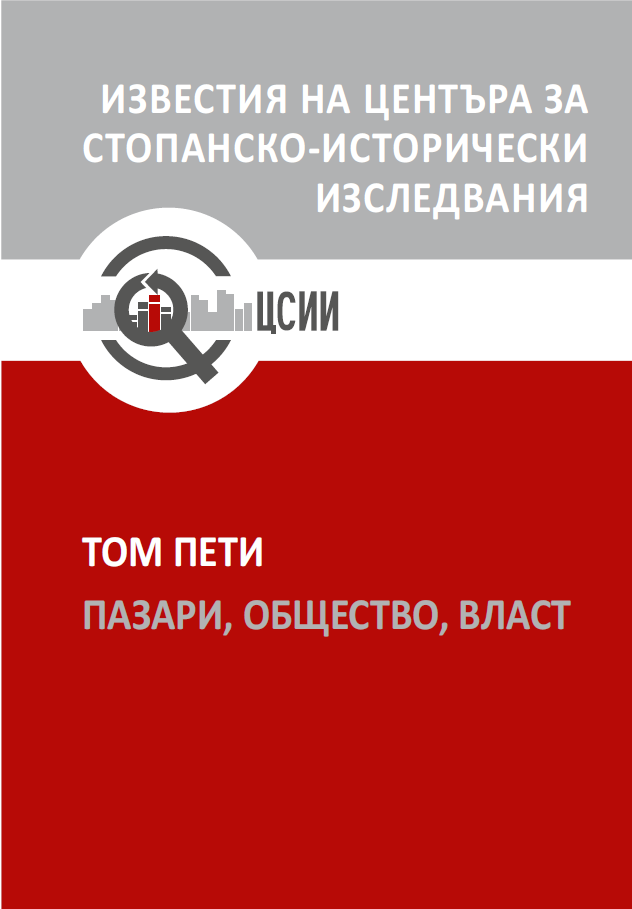

The paper explores the role of intermediaries and market microstructures in Black Sea Grain Trade through the example of the case of Varna and the wider region of the Bulgarian Black Sea coast. It focuses particularly on the transition from the late Ottoman, largely unregulated, regional grain markets to the period of autonomous Bulgaria (1878-1908), when international and domestic, economic and social pressures invited the Bulgarian authorities to intervene in local economies and try to regulate the grain markets and the sales of grain from the hinterland to the port-cities. The case of Varna shows that these efforts for institutional change corresponded to – and were largely provoked in the framework of – struggles for control of the processes of agricultural surplus extraction in the hinterland of the port outlets, struggles, which had a discernible ethnic dimension.
More...
The article dwells on the role that trade played in the annexation of land along the southeastern coast of the Baltic Sea after a series of crusades and mass Christianization of local tribes during the late 12th and early 13th c. The author analyzes the development of urban life and communications in Livonia, emphasizing the crucial role that commercial activity and the development of trade routes played in the integration of these lands and population into the Christian European world. Afterwards, the author takes a comparative research approach by drawing parallels between the Mediterranean area and the Black Sea basin during the 13th c. It is stressed that, unlike the merchants of the Hanseatic League, who established a solid cartel, which allowed them to monopolize trade in the Baltic Sea, the Italian merchants could not afford such a course of action. Also, the article focuses on the significance of winter routes along the frozen rivers and lakes in Livonia in comparison to Southern and Southeastern Europe. In conclusion, it is stated that the commercial activity in Livonian lands during the 13th c. can be considered in the context of integration processes but it cannot be considered the only and primary way to integration. For instance, based on the comparison with Genoese trade in the Mediterranean Sea, the Back Sea and the Sea of Azov a conclusion can be drawn that the longer routes of the Genoese involved more risk factors. In this aspect, Livonia was in control of relatively shorter and more easily accessible routes, with summer and winter options. This contributed to the flourishing of trade in that region as well as the fostering of international and domestic integration over the following centuries.
More...
In the late 18th century the Ottoman Empire almost completely lost control of its import and export trade, which were run mainly by foreign merchants. Therefore, a large part of Ottoman traders accepted the status of protégés of those mustemins and became foreign citizens. In early 19th century the Ottoman authorities took some steps in order to restore the balance. They created two special categories of Ottoman merchants – avrupa tuccars (non-Muslims) and hayriye tuccars (Muslims), also known as beratlis, because of the special certificate (berat) they received from the authorities. The beratlis had the right to trade on the international market and to organize the international trade of the Empire. Beratlis were distinguished by a number of privileges they received from the Ottoman authorities, by the considerable capital they possessed, and by the networks of contacts and connections in the Ottoman Empire and abroad that they built. The article presents the category of non-Muslim beratlis, based on data from two Ottoman defters stored in the Ottoman archive in Istanbul. Some analyses weremade based on the names of the beratlis, their place of residence, the year of the beginning of their activity, and the names of their assistants. We were able to reconstruct the ethnic and religious structure of the group; geographical distribution of the beratlis and their assistants; their networks and connections. Special emphasis in the presented examples is put on Bulgarian lands and some figures of the Bulgarian Revival registered also as beratlis.
More...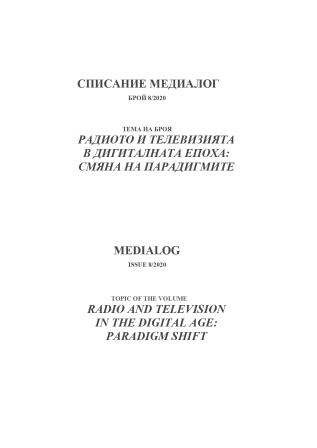
A non-representative survey on the attitudes of consumers towards music events in the country and the channels through which they are informed about concerts was conducted by Anna Nikolova less than a month before the declaration of a state of emergency in Bulgaria (due to COVID-19). The analysis of the results of the online survey "How do you know about your favorite concerts?", filled in by over 300 Bulgarians between January 27, 2020, and February 21, 2020, sets an interesting temporary picture of the way consumers in the country are informed about upcoming music events.
More...
Disruptive media environment applies the creative destruction forces creating new value networks and destroying the incumbent. To write about the new or the old media economics is a speculative idea. In this paper we stick to three key changes or tendencies that impact the behaviour of the media companies: (1) personalization and contextualization, (2) fragmentation, (3) partnership and digitalization. We recognize the need of the elaboration of new value proposition from the traditional media.
More...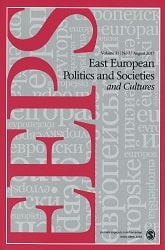
In the summer of 1993, an American businessman friend negotiating privatization deals in East Central Europe questioned me about gender inequality in the region. He said he was surprised to find that several of the top financial executives of large, state-owned enterprises he met at the negotiating tables were women. Since this is one of the most important and prestigious positions in a capitalist corporation, he concluded that women in newly democratized East Central Europe have achieved a level of gender equality unheard of in other parts of the world. [...]
More...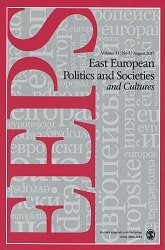
During the Tito era Yugoslavia ran a budget deficit. Because communist ideological constraints made it impossible to borrow capital, the government financed the deficit by printing money, causing annual inflation rates of 15 to 25 percent. As the Titoist system deteriorated, economic chaos, the budget deficit, and inflation all increased. The breakup of the former Yugoslavia exacerbated what was already a serious problem. In 1993 , with a Communist party still in power (Slobodan Milosević's Socijalistička Partija Srbije-SPS) rump-Yugoslavia could not borrow capital. Given the catastrophic state of the Yugoslav economy and Milosević's irrational economic policies, few investors risked their capital on financing the Yugoslav's deficit. The international condemnation of Serbia for its actions in Bosnia and Croatia, coupled with sanctions, made it impossible for the Yugoslav government to borrow money, ideological and market constraints notwithstanding. [...]
More...
Based on the preserved documentary heritage of Vasil Levski, this paper examines his understanding of authorities, markets and society in both the Ottoman Empire and Europe. The study is based on the latest and most precise edition of the historical documents, the author of which is, or is supposed to be, the Apostle. The conclusions are compliant and based on the existing significant volume of historical literature about Levski. Without claiming to be a discovery, the author's desire is to shed light, as far as possible, on the basis of the Apostle's proven documentary heritage, on his attitude to the issue under discussion – authorities, markets and society. The documents show a strong emphasis on the issue of raising sufficient funds, which occupied Levski’s attention. The money was collected on a voluntary basis, but also forcibly, in order to provide the necessary weapons for the future Bulgarian uprising. In this sense, it is fair to emphasize once again the proverbial honesty and high degree of responsibility shown by the Apostle. Due to the lack of a permanent financial institution, he periodically reports the income, which received, and the expenses he made. The preserved, albeit incomplete, documents show no financial abuses. Moreover, the documents testify about the strict control performed by Levski over the collecting and reporting of funds by other members of the organization.
More...
The Revival was the period of economic and cultural rise of Bulgarians, without an existence of a state. It is the result of economic freedom and spontaneous order without centralized state power. The establishment of Bulgarian state did not lead to great economic prosperity, but to the reconstruction of the free economy to centralized one. One of the erudite of Bulgarian Revival was Vladimir Svintila. In his research dedicated to mentality and folk psychology, he reveals the economic ethos of Bulgarians during this period. The purpose of this paper is to present a different point of view to economic life of the Bulgarians during the Revival period, which in our opinion is contained in the books of Vladimir Svintila. It reveals facts that popular history conceals as they are not similar to the idea of national centralized state. For the needs of the research comparative historical analyses is used along with the network approach to complex systems.
More...
The article presents the Tanzimat (the reform period)–created municipality councils and their role in the Ottoman province administrative system. The focus is on the capitals that these councils successfully accumulated and managed. The employees will be presented responsible for the cash funds in the area and the amount of money. These financial assets were used for giving loans with interest. Yet another proof that when there is strong market demand, combined with feeble supply, the normative acts are usually ignored. The research is based on the published ten volumes of Ottoman statistical yearly editions on the Danube area chronologically comprising the period from 1868/1869 to 1877/1878. Besides, several materials have been used taken from the officious newspaper Dunav (Danube). These represent the administrative framework where municipality councils are located and function. Special attention has been paid to one publication of 5th January 1872, which proves that the municipality councilors used to lend money with interest.
More...
At the end of the 19th century, the Bulgarian party structure was established, and through the mechanisms of the constitutional system, took over the government of the country and its political and economic modernization. The Liberal Party led by Dr. Vasil Radoslavov is one of the parties governing the country. Like the other parties, it kept its focus mainly on the political and not economic sphere. In their program, the liberals concretize their practical ideas. Their views on the protection and defense of agriculture, livestock, industry, trade and the introduction of a modern tax system are in line with the latest ideas of their time and fully meet the interests of the economic change of the state and the society.
More...
The Institute for constitutional Ministerial criminal liability in Bulgaria is based on article 155–159 from the Constitution of the Bulgarian Principality, adopted in 1879. It provides for a specific procedure through which the members of the government to be judged outside of the civil courts. From 1880 to 1923, under this procedure four trials were held. In this case, we focus on the work of the Second State Court (1910 – 1914). It explores potential law violations committed by ministers from People`s Liberal Party of Bulgaria, during the period of 1903–1908. Later on, in 1913, the indictment was published. This paper analyzes the crimes of former Minister of War Mikhail Savov that are subject to an indictment. The author comes to the conclusion that most of the allegations were unfounded. In 1914, as a result of political reasons, the decision of the Parliament was made to remove the criminal responsibility of the ministries.
More...
The study traces the formation and development of the Church-Economic Department at the Holy Synod of the Bulgarian Orthodox Church. The newly created structure aims to organize the monastery lands into efficient farms. With this purpose, a department was created, which monitors the work of monastery forests and one, which takes care of the fruits and vineyard distribution. In order to provide material support of the newly created structure, a Church-Monastery Fund was also created, which is filled up by surpluses of the church and monastery funds. Some distinct experts were involved in the Church-Monastery Department, who help in formation of its structures and in reaching high yields and quality of the cultivating seedlings and crops. The successful development of the Church-Economic Department is hindered by the state policy. Alexander Stamboliyski’s regime brings in action the Law on Labor Land Ownership, which requires confiscation of uncultivated lands and its distribution to the needy population. The article of the law also applies to monastic lands. This policy has two irreversible consequences. One is connected to the gradual withdrawal of leading and specialized personnel out of the Church-Economic Department, and second is related to increasing the negative reaction of part of Synod elders and some abbots. The Church’s internal disagreements regarding the economic policy are caused by the centralization process and regulation of the economic activity and the exhaustion of the monastery funds, from which about 1/3are being allocated for the benefit of different church funds.
More...
The predominant opinion in Bulgarian historiography on the consequences of the 19th of May 1934 coup d’état is that there was a significant change in the nature, directions and content of politico-economic life in Bulgaria. This dramatic change is considered a result of the new governmental policies. To some extent, this is correct statement for certain aspects of Bulgaria's development during the second half of the 1930s, and until 1944. However, there are areas of public life in which there is clear continuity between the pre-coup anti-crisis policy of the Popular Block (Naroden blok) and that of the post-coup government led by Kimon Georgiev. Among areas of continuity is the economic policy aimed to overcome the negative effects of the Great Depression on Bulgarian economy. The problem of continuity in economic policy of Bulgaria during the 1930s has not been developed so far in Bulgarian historiography. This article aims to reveal the existence of continuity between the governments that ruled the country during the Great Depression and, to raise the general issue of continuity during the Third Bulgarian State.
More...
Bulgaria in the period between the two world wars was one of the countries that make extensive use of customs and customs policy as a powerful instrument for influencing trade, production and public finances. In this sense, this report aims at presenting trends, developmental features and clarifying the main factors responsible for the problematic status of customs duties and the customs regime. The customs policy is a very good barometer of the state of national capital and one of the important tools supporting its formation, also revealing very well the actual specifics of the ruling socio-economic system. For this reason, with the present publication the author aims also to pay attention to the problems related to the adequacy of the terminology used to describe the economic system during that period.
More...
This article analyzes the dynamics of an entrepreneurial activity, mine exploitation, at the end of the nineteenth century in Salonica through the economic activities of an entrepreneur, Osman Inayet and proposes an evaluation of the complex relationships he created with other entrepreneurs through mining activities. Legal transformations concerning mining activities coupled with the economic growth due to the commercial expansion especially in port-cities such as Salonica in this period paved the way for an increase in the interest in mining activities. The mining activities of Osman Inayet, one of the entrepreneurs engaged in this sector, serve to analyze the components of the economic network he formed around this activity and lead us to enrich our comprehension about the nature of economic relations in Salonica at the end of the nineteenth century. Focusing on an individual case provides a more comprehensive picture of individual choices, decisions, and experiences. Furthermore, this analysis, based on archival documents on mine concessions, provides new perspectives to our understanding of the inner mechanisms entrepreneurial activities.
More...
On the basis of partially published Ottoman register material from the 16th and 17th centuries and the published legislative acts of the Ottoman sultans – canuns and canunnames (laws and legislations), and etc., regulating the system of market duties and taxes in the Ottoman Empire, the author makes an attempt tooutline the economic characteristics of the settlements – a total of 43 – from the nahi / kaza of Hotalich and the formation of market relations within its scope. The diverse and compact information contained in the selected for the purposes of the study mufassal (detailed, nominal) defters from 1516–1517, 1541–1545, 1613–1614 and 1642–1646 allows us to follow: the establishment of Servi/Selvi as the administrative center of the nahi/kaza Hotalich; to look for indications of its urban status; the formation of a separate market, as indicated by the inscribed market bac by Servi itself (bac-i bazar nefs-i Servi), and its transformation into a market center for the region. It is the commercial bac fee, which as a rule accompanies every transaction on the local city market (except for the purchase and sale of real estate – vineyards, gardens, mills, houses, shops) and is an important part of the system of market duties and taxes is a definite indicator of market activity in the studied settlements. Although it is difficult to reconstruct the picture of the city market only on the basis of the records in the mufassal defteris, which register only the volume of this activity, the applied deductive, conditionally speaking, and inductive method to the entered taxes and fees, reveal not only the whole set of cultivated crops and specific livelihoods of the population, but also provide an opportunity to highlight those industries in the general production characteristics of the settlements of the nahi Hotalich, oriented to the market.
More...